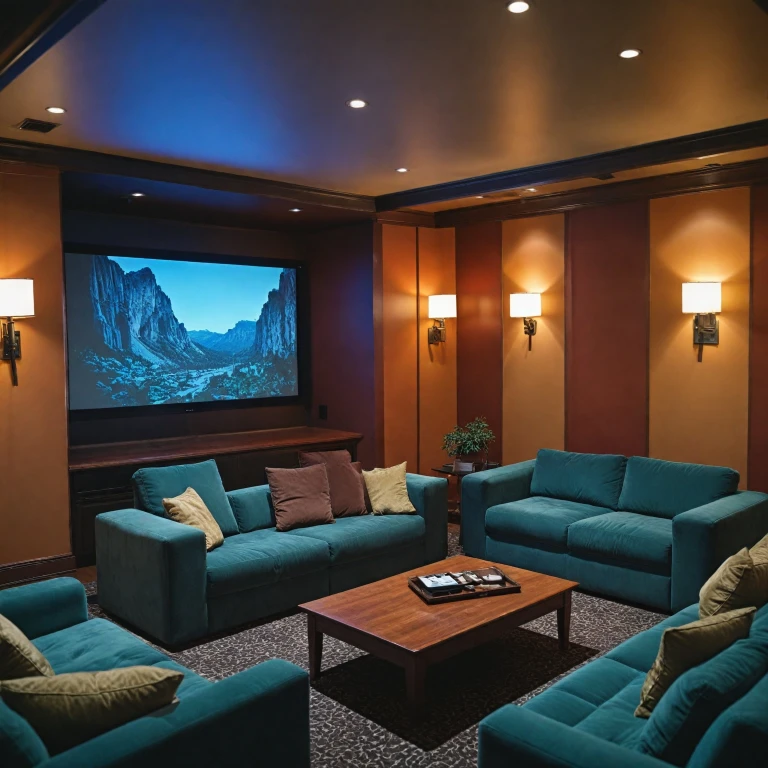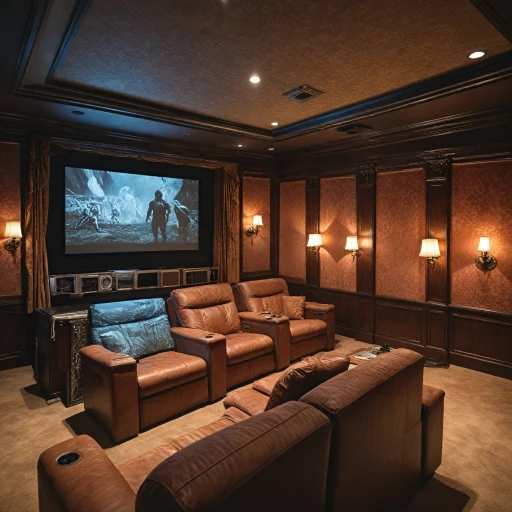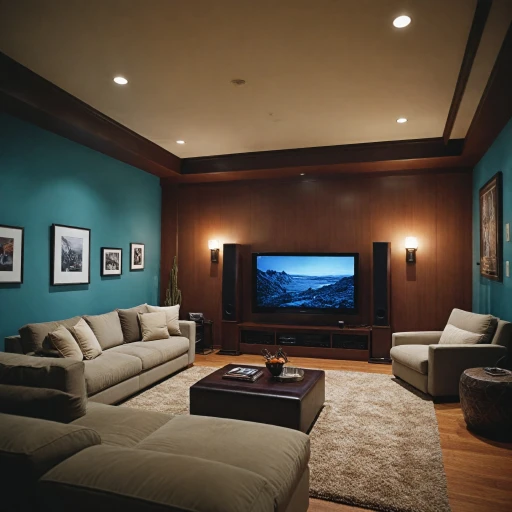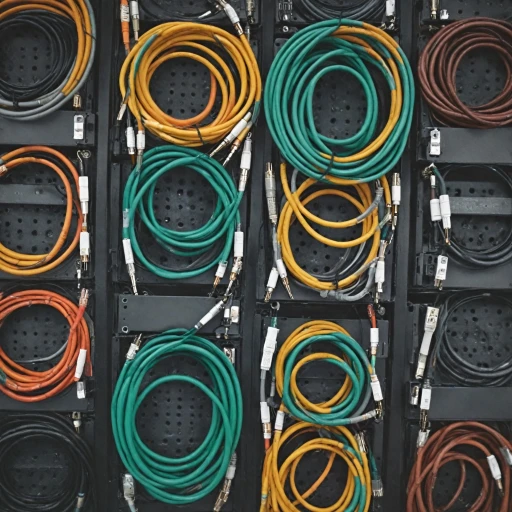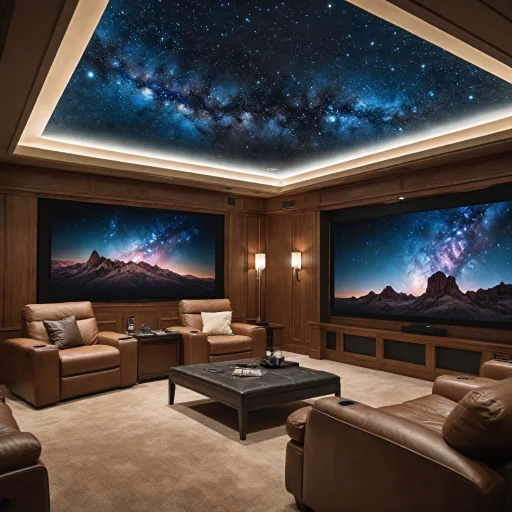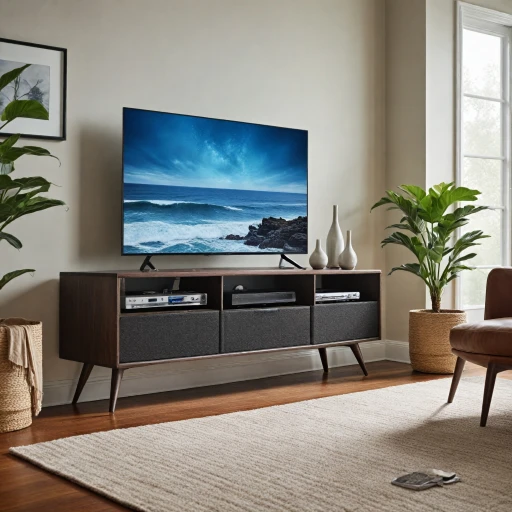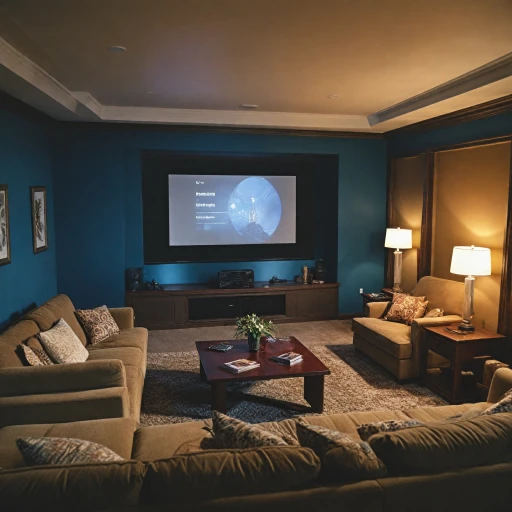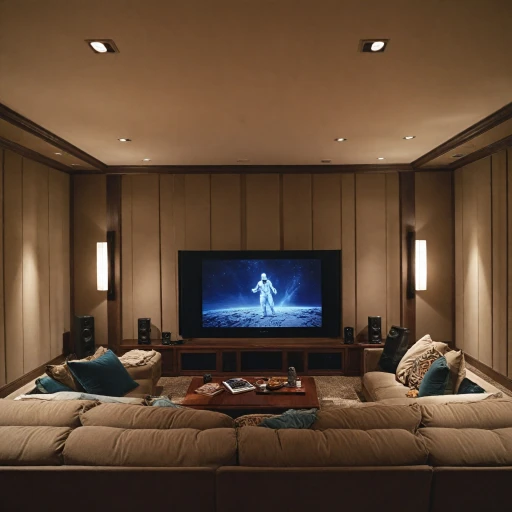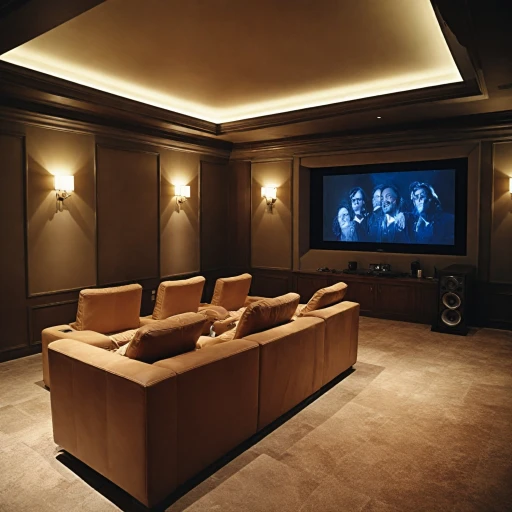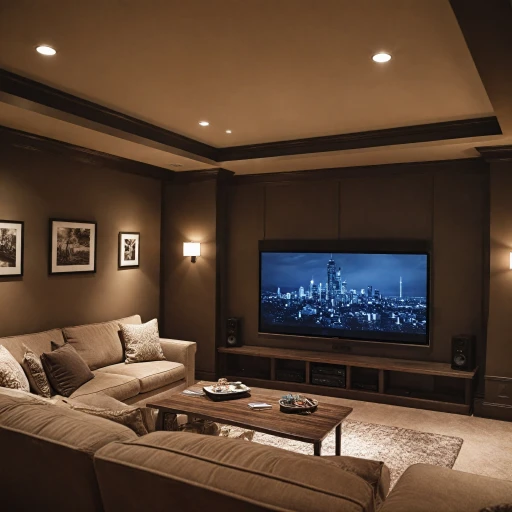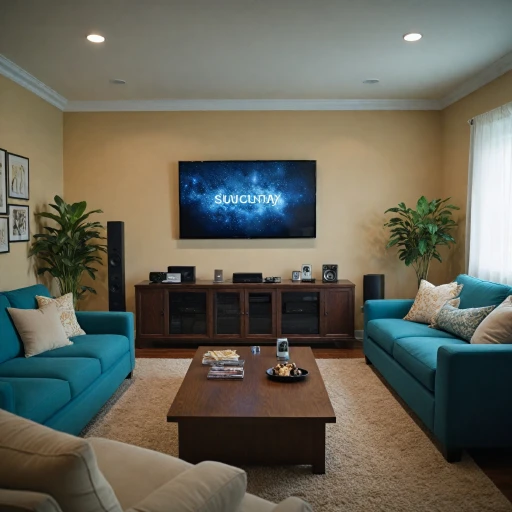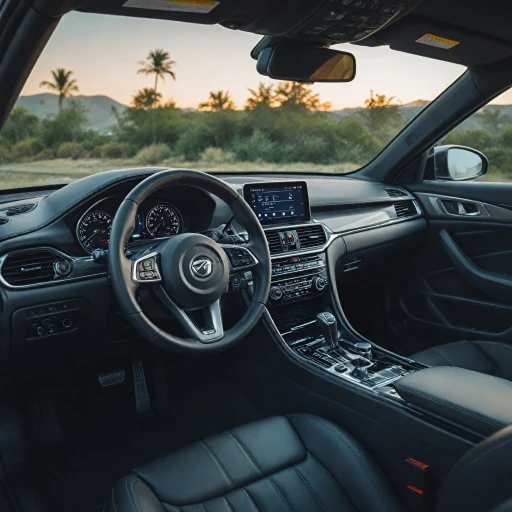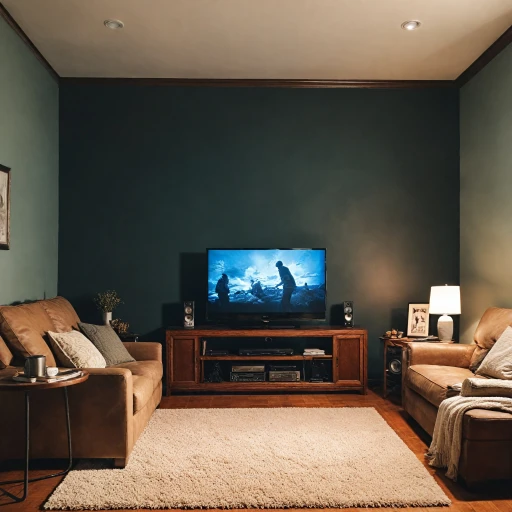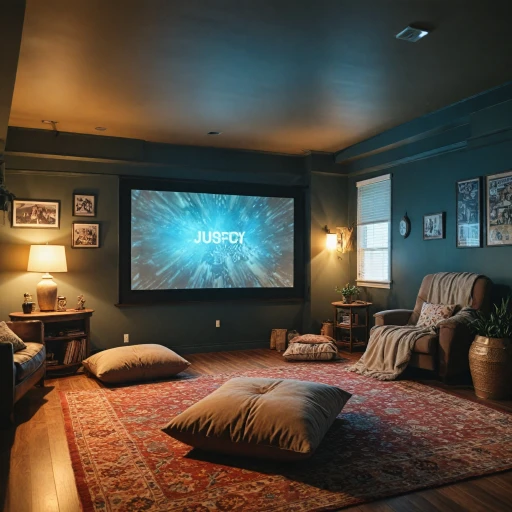
The Role of Speaker Wiring Cables in Home Theater Systems
In a well-optimized home theater setup, speaker wiring cables play a crucial role in delivering high-quality audio. They act as the bridge that carries sound signals from your amplifier to your speakers, ensuring that you get immersive audio that complements your visual components. The quality and type of speaker wire can significantly impact the performance of your entire audio system. Selecting the right cables can make or break your audio experience, as they contribute to the fidelity and clarity of sound produced by your speakers.
The Essential Link for Quality Sound
Speaker wires come in various gauges or thicknesses, measured in AWG (American Wire Gauge). The wire gauge is critical because it determines how much resistance is present in the wire; thicker wires (with lower gauge numbers) have less resistance and are ideal for transmitting signals over longer distances. For example, a 12 AWG speaker wire is often recommended for high-quality and low-resistance connections.
The material used in the speaker cables is another factor that determines their effectiveness. Copper is a common choice due to its low resistance and cost-effectiveness. Premium speaker cables may use oxygen-free copper to ensure maximum conductivity and minimal signal loss, even though these ultra speaker options may come at a higher price.
The significance of proper cabling extends beyond just connecting audio. It’s all about ensuring the highest performance from your speakers so you can enjoy every note, sound effect, and dialogue in the clearest form possible. Investing in quality speaker cables ensures you experience the full potential of your home theater audio system.
For those looking into more convenient setups, consider exploring wireless surround sound systems as an alternative for enhanced audio experiences without the clutter of wires.
Types of Speaker Wiring Cables
Varieties of Speaker Wiring Cables
Understanding the different types of speaker wiring cables is crucial when setting up your home theater system. There are several options available, each with distinct characteristics that can influence your audio experience.- Oxygen-Free Copper Cables: These cables are renowned for their high conductivity and quality of sound. The free copper composition reduces wire resistance, providing clearer audio signals through your audio systems.
- Gauge Speaker Cables: These refer to the thickness of the wire, usually measured by American Wire Gauge (AWG). An awg speaker cable with a lower gauge number implies a thicker wire and typically results in less resistance, making it a suitable choice for high-performance systems.
- Premium Cables: These are often composed of high-quality materials designed to deliver superior audio quality. While the price might be higher, they ensure longevity and consistent performance of your audio setup.
- Ultra Speaker Cables: Built for specialized setups, they offer the best sound fidelity. Ideal for audiophiles striving to perfect their home theater systems.
- Binding Posts & Banana Plugs: Often, these cables come with specialized connectors like banana plugs for easy and secure connections to your speakers and amplifier systems.
Choosing the Right Speaker Wiring Cable for Your Projector
Finding the Perfect Speaker Wiring for Your Setup
It’s essential to choose the right speaker wiring cables when planning your home theater system. The performance and sound quality of your audio setup greatly depend on these wires. Here’s a quick guide to help you make an informed choice.
Firstly, consider the wire gauge, often referred to as AWG. The gauge is crucial because it affects the wire resistance and ultimately, the sound quality. A lower AWG means a thicker wire, which is generally beneficial for reducing resistance, especially when you have long distances to cover in a car audio or home system. For most home theater systems, a 14 or 16 AWG speaker wire is recommended to ensure clear and robust sound delivery.
Another key factor is the material of the cable. Copper is the preferred choice due to its excellent conductivity. Choosing oxygen-free copper cables can further enhance sound quality by minimizing oxidation-related issues. These premium speaker wires, though slightly on the higher side of the price spectrum, deliver exceptional audio performance.
Additionally, consider the type of speaker wiring termination that your system supports. Popular options include banana plugs, binding posts, and bare wire connections. Banana plugs are user-friendly and ensure a secure connection, making them a favored choice among audiophiles.
It's also important to match the speaker wire to your amplifier and speaker specifications. Look for cables rated to handle the high power output of your amplifier and the impedance of your speakers to avoid performance issues.
Lastly, measure the distance accurately. Estimate how many feet of cable you’ll need to avoid buying excess or insufficient wiring. Remember, longer wire runs require thicker cables to maintain the integrity of the audio signal over distance.
Choosing the correct cable speaker product will not only optimize your audio systems but also enhance your overall home theater experience. For more tips on how to optimize your viewing and audio experience, you might want to explore suggestions in enhancing your home theater experience with a Da-Lite projector screen, which can further elevate your setup’s performance.
Installation Tips for Speaker Wiring Cables
Effective Installation Tactics for Speaker Wiring
Proper installation of speaker wiring cables within your home theater system can greatly impact the sound quality and overall experience you will enjoy from your audio setup. This section aims to offer guidance on laying out and connecting audio wires, ensuring efficient transmission of sound from your amplifier to your speakers. Begin by measuring the distance between your amplifier and your speaker placement. This will help determine the required length of your cables. Most systems use speaker wires, ranging from 16 AWG to 12 AWG, based on the distance and power output. For high-powered audio systems, thinner wires may result in increased wire resistance, making thicker cables (lower gauge) more suitable for maintaining pristine sound quality over longer distances. Before connecting your speaker cables, it's important to prepare the ends of the wires. Strip the insulation to expose the copper cores, making certain you don’t cut into the wire itself. Attaching banana plugs can streamline the connection process and help ensure a secure, interference-free connection to the binding posts of your speakers and amplifier. Pay attention to the polarity of your cables, connecting the positive and negative ends correctly to achieve optimal sound performance. Misconnections can lead to out-of-phase speakers, diminishing audio quality. The wires are often color-coded to guide this process—red for positive, black for negative. When routing your wires, keep them away from power cables as much as possible to minimize electromagnetic interference. Tucking wires into conduits or using cable organizers not only improves the aesthetics but also protects the wires from damage. If dealing with ultra speaker or premium speaker setups, consider oxygen-free copper cables to offer minimal resistance and better performance. Such products could come at a slightly higher price; however, they may promise enhanced durability and sound clarity. Implementing these practices during the installation phase will set a strong foundation for creating an impressive audio system experience. Properly installed and maintained speaker wires lead to exceptional home theater sound quality, helping to avoid many common challenges in future use.Common Challenges and Solutions in Speaker Wiring
Overcoming Obstacles in Speaker Cable Connections
Navigating the intricacies of connecting speaker wires to create the optimal audio experience in your home theater projector system can be challenging. However, understanding common issues and their solutions can guide you through the process efficiently. One frequent challenge is dealing with wire length and its impact on sound quality. Speaker cables stretching across significant distances can lead to diminished sound quality due to increased wire resistance. Choosing the appropriate wire gauge, such as the thicker 12 or 14 AWG speaker wires, can mitigate this issue by efficiently carrying the audio signal over longer distances, ensuring you achieve high-quality sound across your system. When tackling wire management, keeping your cables organized and tidy can seem daunting. Using cable management solutions like binding posts or adhesive cable organizers helps streamline the process. This approach not only maintains the aesthetic appeal of your system but also ensures safety by preventing tripping hazards. Another obstacle is ensuring firm, secure connections at both the amplifier end and the speakers. Loose connections can degrade audio quality; hence, utilizing secure fasteners such as banana plugs can aid in solidifying the connection point, offering a stable link between cables and audio components like the amplifier speaker. For those facing oxidative challenges in copper speaker cables, using premium options like oxygen free copper cables can offer longevity and reliability. These reduce the risks of oxidation, ensuring enduring performance. Whether it's selecting the right type of cables or managing the physical setup, addressing these common challenges will significantly enhance your home theater system's performance. Regular checks and maintenance, as highlighted in related sections, will ensure your wires continue to deliver exceptional sound quality.Maintaining and Upgrading Your Speaker Wiring Cables
Regular Maintenance for Optimal Performance
Maintaining your speaker wiring cables is crucial for ensuring that your home theater system delivers high-quality sound. Regularly inspect the cables for any signs of wear or damage. Look for frayed wires or loose connections, especially around the binding posts and banana plugs. These issues can lead to poor audio quality or even damage your amplifier and speakers.
Upgrading Your Speaker Cables
As technology advances, upgrading your speaker cables can significantly enhance your audio experience. Consider investing in premium speaker cables made from oxygen-free copper, which offer lower wire resistance and better conductivity. When upgrading, pay attention to the wire gauge (AWG) to ensure it matches your system's requirements. A thicker gauge speaker wire, such as 12 AWG, is often recommended for longer runs exceeding 50 feet to minimize signal loss.
Choosing the Right Time to Upgrade
Deciding when to upgrade your speaker wires depends on several factors, including the age of your current cables and any noticeable decline in sound quality. If you're planning to upgrade other components of your audio system, such as the amplifier or speakers, it might be a good time to consider new cables as well. This ensures compatibility and maximizes the performance of your entire system.
Considerations for Future-Proofing
When upgrading, think about future-proofing your setup. Opt for cables that are rated for higher power handling and are compatible with ultra speaker systems. This way, you won't need to replace them if you decide to upgrade other parts of your home theater system in the future.
Cost vs. Performance
While premium cables can be more expensive, they often provide better sound quality and durability. However, it's essential to balance price with performance. For most home theater systems, mid-range cables offer a good compromise between cost and audio quality. Always compare products and read reviews to ensure you're getting the best value for your investment.
